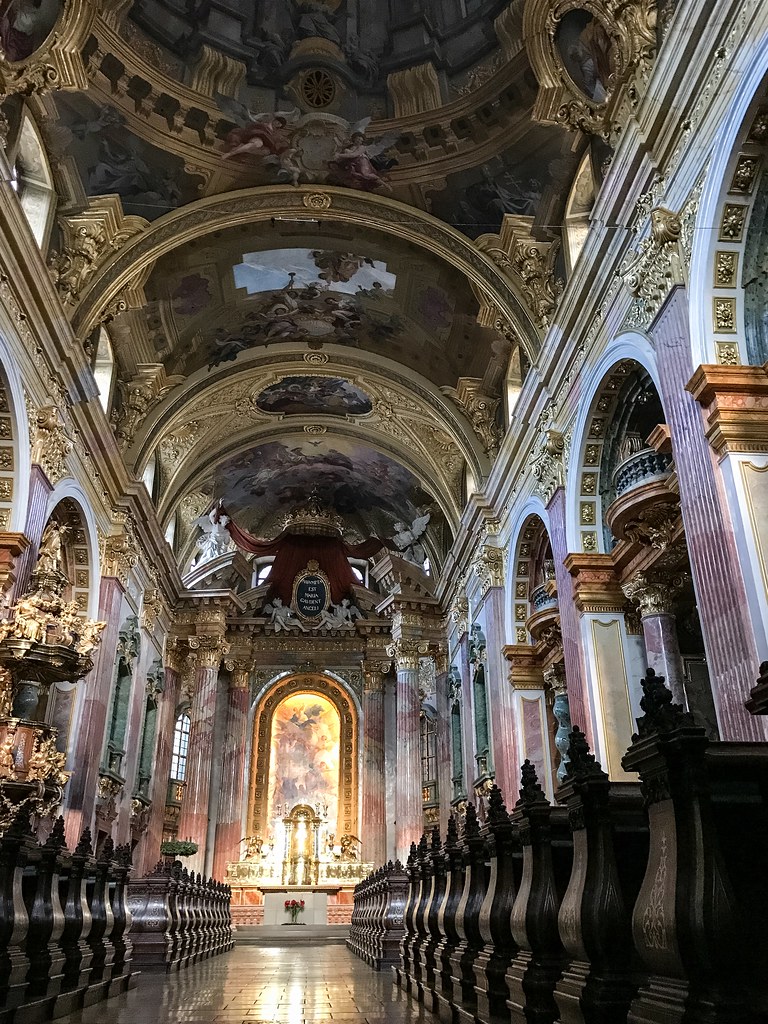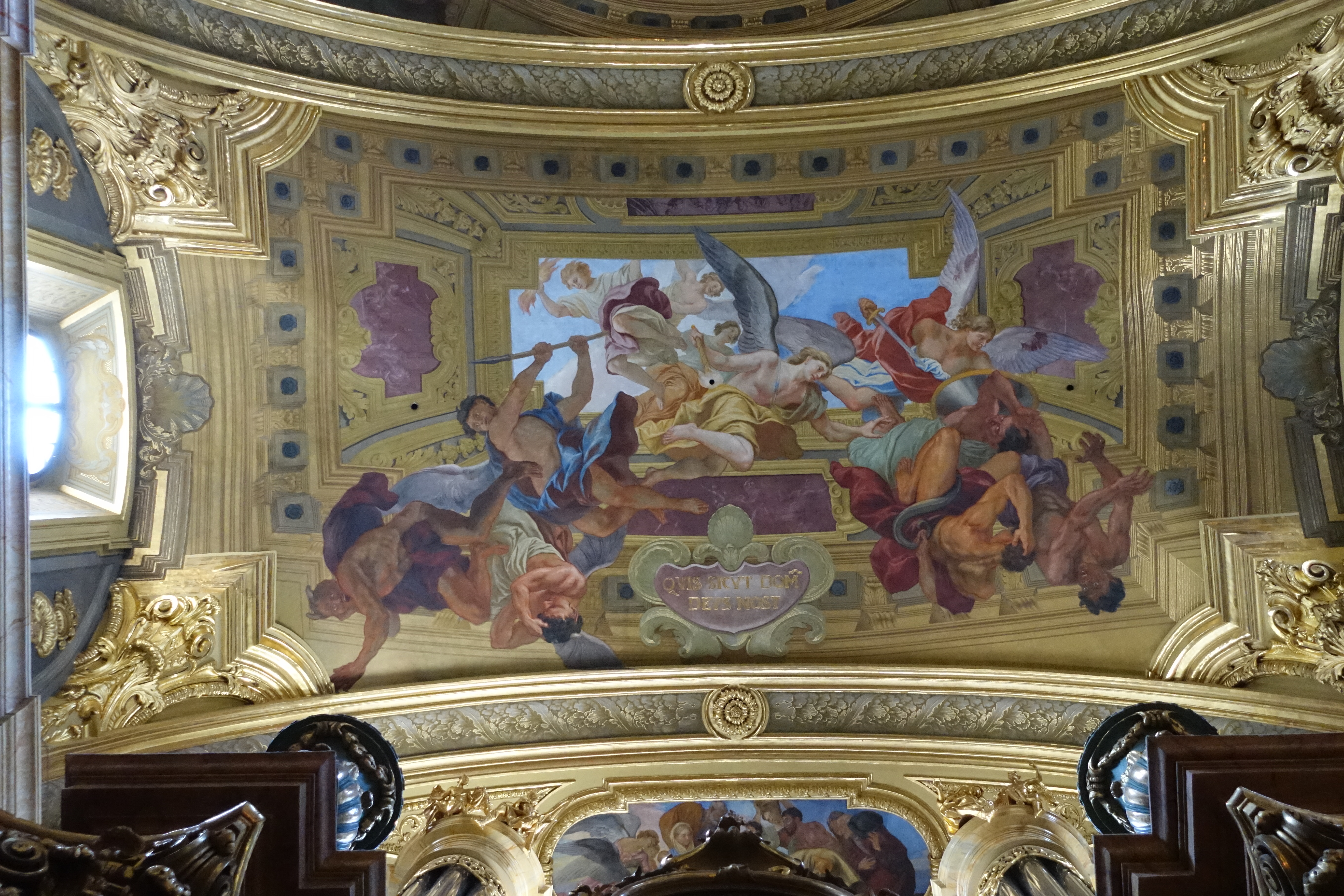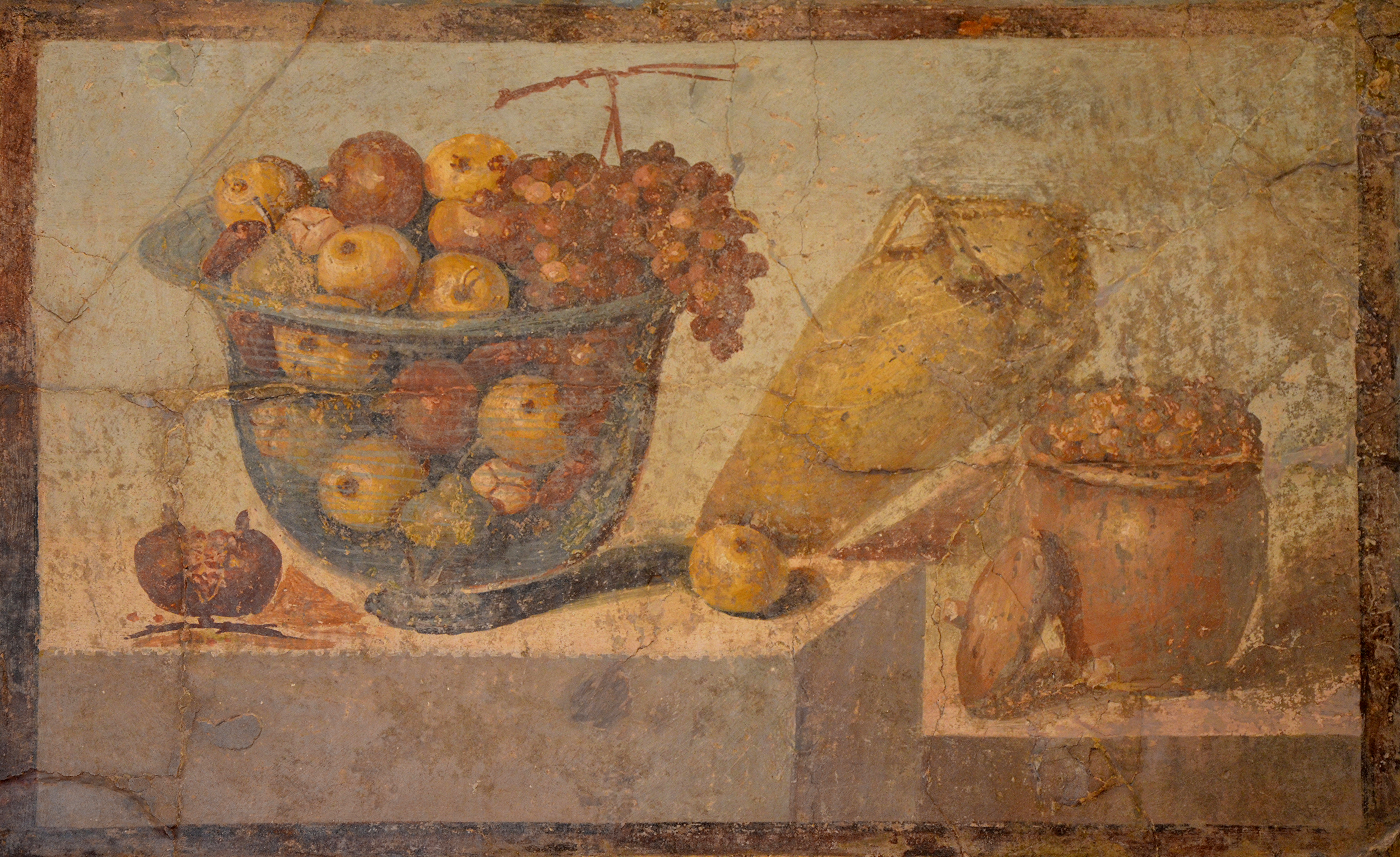In painting, it’s the representation of an object with such verisimilitude as to deceive the viewer concerning the material reality of the object.

Image source: https://search.creativecommons.org/photos/d6aa215e-4f55-4da0-bbb9-30d0f6b92405 by Vernaccia

Image source: https://search.creativecommons.org/photos/bf5752fb-40cd-4349-83e7-60926ac9d800 by Joseolgon
Origins and History
The ancient Greeks who had emancipated themselves from the conventional stylizations of previous art liked this idea. For example, the grapes painted by Zeuxis would have been so lifelike that the birds tried to eat them.
The technique was also popular with Roman muralists.

Image source: https://search.creativecommons.org/photos/43cb8aa7-603a-41ab-8e2d-c64414d3b618 by Carole Raddato from FRANKFURT, Germany
Trompe l’oeil never reached the status of an important artistic achievement, however, European painters from the early Renaissance onward encouraged illusionism by painting false frames from which to bring out a still life, a portrait, or by creating window-like images that suggested real openings in the wall or ceiling.
Types
The “trompe l’oeil” embraces all illusionary artistic devices through painting, sculpture, architecture, and decorative arts, but the two most common types are:
- Architectural painting: (quadratura) which creates the optical illusion of the highest ceilings;
- Easel painting: creates the visual illusion of depth in the image –receding into the distance, or reaching out towards the viewer.
Giotto’s Fly
Most trompe l’oeil art is humorous – a “game” artists play with observers to raise questions about the nature of art and perception, as illustrated by the story about the famous Florentine painter Giotto (1267-1337), which appears in Giorgio Vasari‘s celebrated book Lives of the Artists (1550).
One day, Giotto decided to play a trick on the older artist Cimabue (1240-1302), to whom he was apprenticed. So when the latter’s back was turned Giotto painted a tiny fly onto the mural which his master was painting. Cimabue then went berserk trying to brush away the fly, before he realized it was an illusion.
Early Renaissance Trompe l’oeil
The more realistic the painting, the more deceptive the Trompe l’oeil.
Not surprisingly, therefore, artists only began to excel at this form of illusionism once they had mastered the application of linear perspective and were able to create true-to-life paintings. This occurred during the Early Renaissance in Italy.
One of the first instances of illusionistic Christian art from this time was the picture of a cavernous chapel which forms the basis for The Holy Trinity (1428) by Masaccio.

Image source: https://search.creativecommons.org/photos/1e48d15c-1a60-470d-b22e-a8ccccbf3f79 by tpholland
High Renaissance and Mannerist Trompe l’oeil
The Venetian painters Vittorio Carpaccio (1460–1525) and Jacopo de Barbari (c.1440-1516) were the first Renaissance artists in Venice to add small trompe-l’oeil to their paintings, extravagantly exploring the boundary between image and reality.
It may appear that a fly had settled on the frame of the painting, or a fake curtain may hide part of the image, or someone may appear to be climbing out of the frame of the painting.
Baroque Trompe l’oeil
Illusionistic art, especially quadratura and other architectural devices, achieved its apogee during the period of Baroque art. Famous examples taken from Baroque painting include:
- Caravaggio‘s Supper at Emmaus (1602), in which he tries to project his subjects through the canvas and out into our own space;
- Triumph and Apotheosis of St Ignatius (1691-4, San Ignazio, Rome) by the great Andrea Pozzo (1642-1709), perhaps the greatest of all quadraturisti. Illusionism also spread to the Spanish colony of Naples (then the second biggest city in Europe, after Paris) during the mid-17th century.

Image source: https://en.wikipedia.org/wiki/Illusionistic_ceiling_painting
Meantime, in the Netherlands, the meticulously realistic genre painting of the Dutch Realist School, during the 17th century, gave ample scope for illusionism.
Focus on Quadratura
Perspective theories in the 17th century allowed for a more integrated approach to architectural illusion, which when used by painters to “open up” the space of a wall or ceiling is known as quadratura.
Trompe-l’œil paintings became very popular in Flemish and later in Dutch painting in the 17th century with the development of still life.
An imaginative form of architectural trompe-l’œil, quodlibet, features realistically rendered paintings of objects such as letter openers, playing cards, ribbons, and scissors, seemingly left lying around.
Nowadays
The fictional trompe-l’œil appears in the Looney Tunes, as well as in the Road Runner cartoons, where, Wile E. Coyote paints a tunnel on a rock face, and the Road Runner then runs through the fake tunnel, followed by the insane attempt by the coyote and then crash into the rock-face.
This visual gag was used in Who Framed Roger Rabbit.
Trompe l’oeil, in the form of “illusion painting“, is also used in contemporary interior design, where illusionistic wall paintings have experienced a Renaissance since about 1980.
Significant artists in this field are the German muralist Rainer Maria Latzke, who invented, in the ’90s, a new method of producing illusionistic paintings, the Frescography, and the English artist Graham Rust.
The early, 19th century and modern masters
- Masaccio
- Luca Giordano
- Carlo Crivelli
- Cornelis Norbertus Gysbrechts
- Franciscus Gijsbrechts
- Charles Willson Peale
- Andrea Pozzo
- Vincenzo Scamozzi
- Giovanni Battista Tiepolo
- Samuel Dirksz van Hoogstraten
- Henry Alexander
- Aaron Bohrod
- Salvador Dalí
- Walter Goodman
- John Haberle
- William Harnett
- Claude Raguet Hirst
- René Magritte
- John F. Peto
Info source:
https://en.wikipedia.org/wiki/Trompe-l%27%C5%93il
http://www.britannica.com/art/trompe-loeil
http://www.visual-arts-cork.com/painting/trompe-loeil.htm
please also visit www.idesign.wiki
